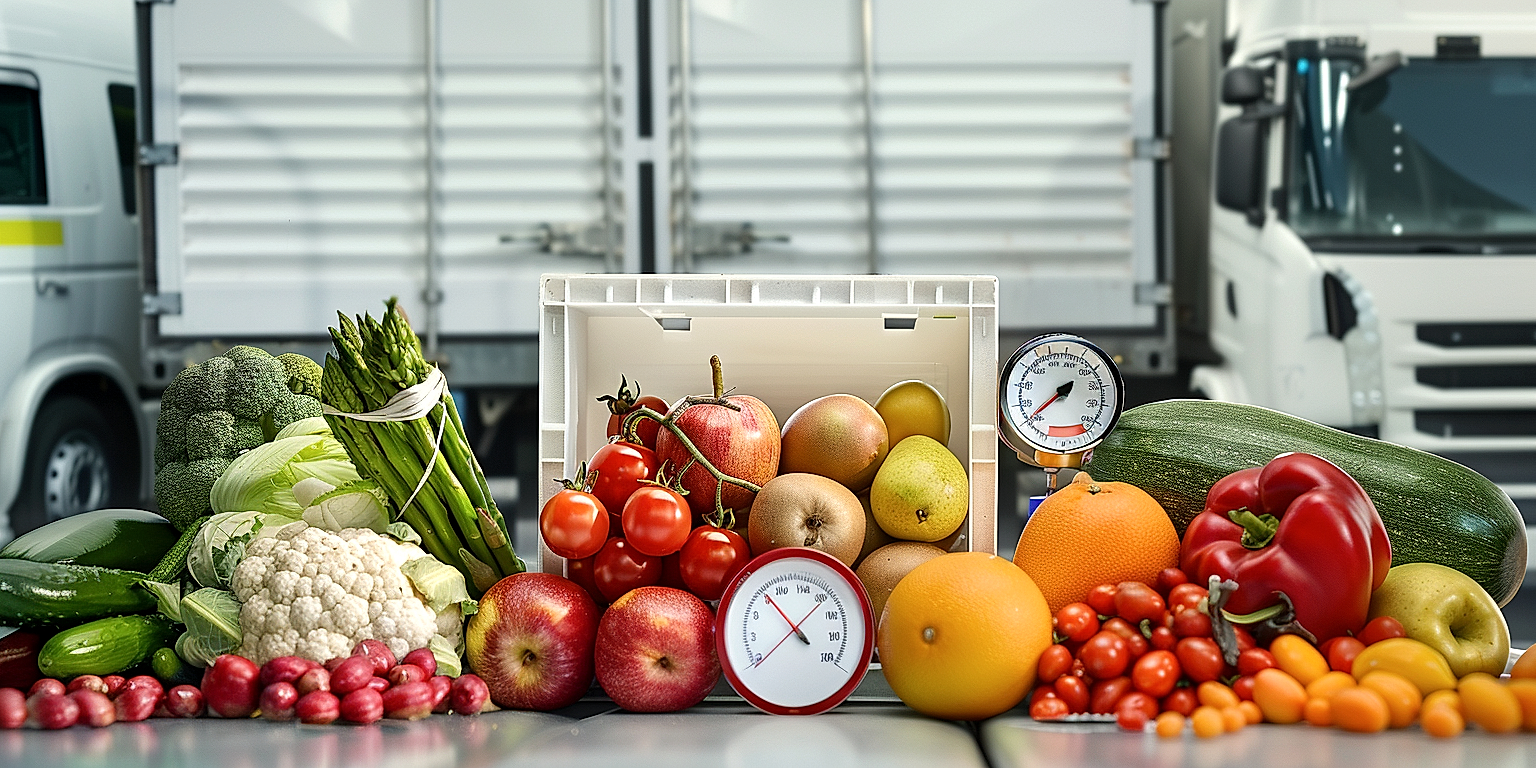In the fast-paced world of produce shipping, safety should take precedence over speed.
But ushering a culture of safety in your workforce isn’t a spontaneous act, it requires premeditated planning and implementation.
Training your staff regarding safety procedures is not optional, rather a mandatory initiative for a successful, incident-free operation.
It reduces the incident rates, enhances the productivity and also fosters a healthy working environment.
With years of experience in the industry, we understand the criticality of safety measures and the implications of overlooking them.
In this post, we shall delve deep into strategies that can guide you to create a safer workspace in your produce shipping business.
Contents
- Ways To Train Your Staff On Safety In Produce Shipping
- 1. Conduct Regular Safety Awareness Seminars
- 2. Implement Hands-on Shipping Procedure Workshops
- 3. Provide Safety Equipment Usage Trainings
- 4. Simulate Emergency Response Scenarios.
- 5. Facilitate equipment handling and maintenance classes
- 6. Organize Periodic Safety-Related Quizzes and Contests
- 7. Enforce screening for safety-rule compliance.
- The Bottom Line
Ways To Train Your Staff On Safety In Produce Shipping
1. Conduct Regular Safety Awareness Seminars
One of the essential components of maintaining a secure environment in the field of produce shipping is the implementation of safety awareness seminars.
These educational events serve as an effective platform where employees can gain the necessary knowledge about safety rules and regulations.
Regularly holding these safety awareness seminars not only ensures that all company staff members have the most up-to-date understanding of safety protocols, but also helps to cultivate a common safety culture within the company.
Choosing topics for the seminar should be based on safety issues that are relevant to the produce shipping industry.
Subjects might include correct lifting techniques, health hazards of improper produce handling, or proper use of safety equipment.
The expertise of industry professionals can be utilized to deliver these important lessons effectively.
Trained safety experts, medical professionals, or even experienced staff members could be invited to impart knowledge during these seminars.
Interactive sessions should be encouraged during these seminars to make them more engaging and informative for the attendees.
Interactive sessions could include question and answer segments, or discussions on real-life safety scenarios, which can provide a more practical understanding of the teachings.
It is also beneficial to regularly reevaluate the content of these safety seminars to ensure that they stay up-to-date with the latest trends and regulations in the industry.
Providing complete and updated safety information would guarantee that the staff is always fully equipped to handle any safety-related challenges they might face in the field.
Moreover, conducting these seminars on a regular basis sends a strong message to the staff that safety is a top priority for the company, which is likely to motivate them to play an active role in maintaining safety in their daily work practices.
Cleanliness and general hygiene are other fundamental topics that should be highlighted in these safety seminars, specifically since we are dealing with food items like fresh produce.
Lastly, make sure that these seminars are not just informative but also motivational, encouraging every staff member to act responsibly and work actively towards maintaining a safe work environment.
Regular, informative, engaging, and motivational safety awareness seminars are an effective way to train your staff on safety in produce shipping, ensuring that they are well-informed and prepared to handle any safety risks they might encounter in their line of work.
2. Implement Hands-on Shipping Procedure Workshops
Effective training of staff in any industry is extensively crucial, but for produce shipping, it becomes exponentially more critical.
In a field where the products are delicate, perishable, and sometimes hazardous if not correctly handled, proper safety training can make all the difference.
Implementing hands-on shipping procedure workshops is a proven method for adequately training staff and instilling a robust culture of safety.
These workshops not only provide theory but also practical, real-world scenarios where employees can learn, apply, and internalize safety measures.
The purpose of providing a hands-on workshop is to enhance the employees’ interpretation of safety rules while gaining technical expertise.
Practical exercises help to increase the retention of safety methods, and, more importantly, inculcate natural safety reflexes.
During these workshops, employees can learn to evaluate occupational health risks, apply recommended handling procedures, and use safety equipment correctly.
Hands-on workshops allow staff members to understand and implement safety procedures under controlled, supervised settings
Such settings ensure mistakes can be corrected promptly, and employees grasp the process of safely shipping produce without causing any unintentional harm to themselves or others.
In addition, these workshops should follow a systematic procedure, starting from basic safety rules, moving onto the advanced safety precautions in handling tools and equipment, and finally dealing with unexpected situations and emergencies.
To ensure the workshops’ effectiveness, they need to be conducted by an experienced professional trainer or someone with a significant amount of experience in commercial produce shipping operations.
Also, it’s essential that workshops are conducted periodically and continuously, making them a regular part of the workplace learning culture.
Instant feedback provided during these practical sessions can be a great way for staff to understand their mistakes and learn the correct techniques.
These workshops not only benefit the organization by propagating a culture of safety, but they also empower the employees to take responsibility for their actions and maintain a safe workplace environment.
Overall, implementing hands-on shipping procedure workshops is an effective way to ensure that your staff is trained and equipped to handle the challenges of safety in produce shipping.
Therefore, investing time, resources, and commitment to such workshops is not just a requirement, but a strategic move for a safer and more efficient produce shipping business.
3. Provide Safety Equipment Usage Trainings
Providing safety equipment usage training is a crucial component in educating your staff about safety in produce shipping.
Adequate knowledge about the functionality and correct usage of safety equipment significantly helps in preventing accidents and mishaps.
For instance, a worker who is unfamiliar with how to use new equipment can pose a threat to themself and their colleagues.
Firstly, it is essential to carry out a detailed session about the specifics of each safety equipment piece.
The correct way of wearing, adjusting, and removing safety equipment should be demonstrated and practiced during these sessions.
The workforce should also be introduced to the situation where each type of equipment is necessary.
Regular and impromptu checks on the use of safety gear not only serve as a reminder for the staff but encourage compliance as well.
These checks ascertain the drill of using the equipment is ingrained in the employees’ routines.
In some cases, an industry standards briefing can also be part of the training to ensure that the employees are up to date about the most recent safety protocols.
The training guides should be made accessible to the staff, possibly in several languages if your workforce is diverse.
Training should not only be a one-time activity; instead, refresher courses should be held frequently to consolidate the learned information.
Simulator-based training ensures that the staff can use safety equipment under various circumstances, thereby enhancing their efficiency.
Remember, the goal is not just one-time compliance but building a safety-conscious culture within your organization.
An integrated approach where workers learn, demonstrate, and share their knowledge about safety equipment with their colleagues guarantees better retention and overall safety.
Finally, reward and recognition for correctly using and maintaining safety equipment can boost employee morale and reinforce the importance of safety.
While we foster a safety-first environment in our workplaces, let’s enhance our focus on equipment handling training, inspection, maintenance procedures, and most importantly, the usage of safety gear.
4. Simulate Emergency Response Scenarios.
In the pursuit of safety in produce shipping, simulating emergency response scenarios is a highly recommended technique.
This training exercise is designed to prepare your staff for the unexpected and ensure they are equipped to handle challenging situations.
Teaching your workers how to respond swiftly and appropriately in case of emergencies helps mitigate potential risks and losses.
Simulating emergency scenarios exposes employees to potential dangers, therefore bridging the gap between theoretical knowledge and its practical application.
These simulations cover various hazards that may be encountered in the produce shipping process.
Such risks could range from equipment malfunctions, spills and chemical leaks to health risks, natural disasters, or even terrorism.
During these simulations, employees learn the appropriate emergency response actions like calling for help, administering first aid, and evacuation procedures.
It also teaches them crisis management planning such as understanding the layout of the facility, identifying safe exit routes and muster points.
Simulations may also include the use of emergency equipment like fire extinguishers, first aid kits and personal protective equipment (PPE).
In addition to handling physical danger, these simulations also help staff manage the emotional trauma in dangerous and stressful situations.
Undergoing these simulations tends to boost employee confidence in handling real-life crises, thereby reducing the possibility of panic during actual emergencies.
Regularly scheduled and repeated emergency scenarios ensure the highest level of adeptness and quick response from your staff members.
However, it is important to remember that the effectiveness of these simulations relies heavily on staff engagement and their understanding of the seriousness of this exercise.
Simulating emergency scenarios not only provides practical knowledge but also helps to embed safety culture within your organization.
Practice, after all, builds perfection and in shipping produce, perfect safety is the ultimate goal.
5. Facilitate equipment handling and maintenance classes
Implementing a robust safety training program in any organization, especially in sectors involved in produce shipping, should include in-depth classes on equipment handling and maintenance.
Workers often find themselves dealing with various types of machinery and tools that are necessary for the successful execution of their tasked responsibilities.
These can be as simple as handheld tools or as complex as forklifts or conveyor belt systems. Understanding how to properly handle these tools and equipment is the first step to ensuring safety.
The inability to handle equipment effectively can result in accidents or malfunctions which not only hinder productivity, but can also pose a significant hazard to the safety and well-being of the workers involved.
Organizations should organize regular equipment handling and maintenance classes that cater to the practical and theoretical aspects of these important elements of safety.
Such training classes should be designed to teach workers how to inspect, operate, and maintain the equipment they use on a regular basis.
Moreover, these classes should also highlight the potential risks associated with mishandling equipment, and how to avoid these risks by adhering to the established operating procedures.
In addition to this, courses on regular equipment maintenance are equally critical.
Regular maintenance can go a long way in preventing equipment-related accidents as it ensures that all equipment functions optimally and as intended.
These maintenance courses should cover topics such as routine equipment checks, necessary adjustments, and where, when, and how to report any problems discovered.
Involving professional trainers with significant experience and knowledge in equipment handling and maintenance can be a beneficial practice to adopt for these classes.
By creating an open environment for these classes, employers can encourage interaction and active participation which can undoubtedly enhance the overall learning experience for the staff.
Lastly, incorporating practical sessions along with the theoretical teaching will allow staff to demonstrate their understanding of the equipment, validating the effectiveness of these classes.
In summary, facilitating equipment handling and maintenance classes is paramount in fostering a safety-conscious culture within the organization.
Taking these steps, therefore, can help minimize safety risks associated with equipment handling and maintenance, ultimately fostering a safer and healthier work environment for employees in the produce shipping sector.
6. Organize Periodic Safety-Related Quizzes and Contests
One effective way to engage employees in safety training is by organizing periodic safety-related quizzes and contests.
This strategy not only helps to refresh their knowledge but also fosters a competitive spirit among the team members, enhancing their interest in safety procedures.
Quizzes can cover various topics ranging from basic safety protocols to more complex guidelines related to produce shipping.
The content of these quizzes should be updated regularly to ensure they remain relevant with any changes in regulatory standards or company procedures.
Regularly updating the quiz content ensures that the company’s safety standards are not only being met, but they are continually improved and reinforced among the workforce.
An interactive platform can be created on the company intranet or social media channels where employees can participate in these quizzes.
The platform can also serve as a resource center where employees can access relevant study materials and training documents.
The top performers in these quizzes can be rewarded with certificates, incentives, or public recognition which can motivate others to participate actively in these safety programs.
Additionally, conducting safety-related contests can take safety training to a more practical level.
In these contests, the employees can be asked to demonstrate safety procedures, identify hazards in the workplace, or suggest measures to improve safety.
Such corners not only test the practical application of their knowledge but also encourage employees to be vigilant about safety.
Quizzes and contests also provide a chance for leaders to identify any knowledge gaps among their teams and address them promptly.
The information gathered from these activities can be used to customize future training sessions.
In this way, safety-related quizzes and contests can become an integral part of the overall employee training and development plan.
Remember, the ultimate goal of organizing these activities is to build a safety-conscious culture where every employee takes ownership and responsibility for their own safety and of their colleagues.
By incorporating quizzes and contests in your safety training plan, you are not only ensuring safety adherence but also building a supportive and proactive workforce.
7. Enforce screening for safety-rule compliance.
One of the most critical aspects of maintaining a safe working environment in produce shipping is the enforcement of safety-rule compliance.
It is instrumental in instilling discipline among the workforce and encouraging adherence to safety guidelines.
Meticulous screening for safety rule compliance goes a long way in preventing workplace accidents and mishaps.
Thorough inspections should be conducted to ensure every member of the staff is adhering to the safety measures.
A stringent screening process helps in pinpointing the gaps in the safety practices, providing opportunities to improve the same.
Classroom training on safety rules must be complemented with regular on-field checks for seamless implementation.
The safety checks can not only validate the safety knowledge of your staff but also establish a culture of safety compliance in the workplace.
Screening shouldn’t be an intimidating process; rather, it should be perceived as a tool for continual learning and improvement.
Proactive checking of safety-rule compliance can provide real-time feedback to the workers, reinforcing safe working habits.
Another aspect of enforcing screening is ensuring the proper usage of mandated safety equipment.
A failure to use safety gear appropriately can be as hazardous as not using it at all, escalating the risk of injuries.
Screening processes should also look into the handling procedures of produce, as mishandling can lead to food safety issues along with worker safety.
Registrations of every screening should be maintained for future reference and tracking of safety-performance.
Alongside the screening, remedial measures should be in place for individuals who consistently fall behind in safety-rule compliance.
Remember, the goal is not to penalize but to encourage the correct safety practices through informed guidance.
A strict yet empathetic screening process can ensure your company not only complies with safety norms but champions them, enhancing the overall safety quotient of your produce shipping business.
The Bottom Line
After thorough and diligent efforts to reinforce safety in workplace environments, it is evident that preventative and proactive measures make a significant impact.
Regular safety awareness seminars, practical shipping procedure workshops, and safety equipment usage trainings all empower employees to take crucial responsibility for their own safety and that of their colleagues.
The value of simulating emergency response scenarios cannot be overstated, as the reality of such situations demands immediate and knowledgeable action.
Equipment handling and maintenance classes offer additional layers of safety, while quizzes and contests ensure knowledge retention and application.
Finally, the importance of strictly enforcing screening for safety-rule compliance sets the standard for a safety-conscious culture in the workplace, thus providing a safer environment for all employees.




